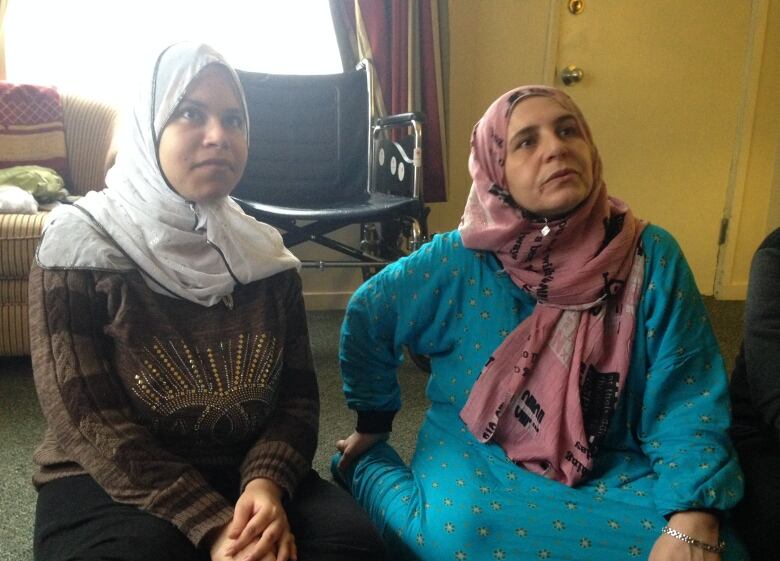Reporters' notebook: 3 months covering Syrian refugees
The CBC's Bal Brach and Catherine Rolfsen share highlights and challenges of the Finding Refuge project

The federal government has met its target, bringing in more than 26 thousand Syrian refugees, including more than 2,200 to B.C.
Since the push began to bring in Syrian refugees, CBC journalists Bal Brach and Catherine Rolfsen have been covering their stories — from the tearful airport reunions, to the ongoing challenges finding housing, accessing English courses and getting jobs in this province.
Three months into the Finding Refuge project, they're sharing what they've learned.
- 3 months covering Syrian refugees: CBC reporters answer your questions
- Finding Refuge: Syrian arrivals prepare for a new life
The surprises
Catherine Rolfsen: I have to admit, I had a one-dimensional idea of a refugee before beginning this project: a victim who is thrilled to arrive in Canada.
But many refugees had good lives before the Syrian civil war and as much as they're grateful to be in Canada — and they are — they are mourning their homes and the family they lost or left behind.
One family I spoke to left elderly parents in a war zone to bring their young children to Canada.

Bal Brach: I guess I shouldn't be surprised by the negativity, but I was taken aback by some of the comments on our stories.
I did a story on a 12-year-old Vancouver boy who used his allowance to buy mittens for refugees, and he was attacked in the comment section.
I remember texting his mom immediately and warning her not to let him read the comments. I've never had to do that before.
But it wasn't all negative. I've done stories about communities coming together to offer counseling or English classes.
The challenges
Bal Brach: Some of these stories have been really heavy — emotionally, they sit with you.
The one story I had a difficult time with was Farrah Ali's. She was out with her son for ice cream when a car bomb exploded and she was severely injured.
Her husband showed me the graphic photos of what that bomb did to her body and to this day, I can't get those images out of my mind.
Catherine Rolfsen: For me, the hardest part has been maintaining my distance as a journalist, given the fact that some refugees have asked me personally for help.
I visited a widow who's arrived in Canada with her five children, but she says her eldest daughter is trapped at the Syrian-Jordanian border with her two children.
She was hoping I might be able to bring them to Canada.

The highlights
Bal Brach: I love hearing when stories inspire others to act. I did a story about Salmon Arm, a small community bringing in close to 40 Syrian refugees.
After my story aired, I received emails and calls from across the country, from people who wanted to help the first Syrian refugee who'd arrived, or learn more about Salmon Arm's efforts.
I passed those on to the sponsors and now they're helping neighbouring communities do the same thing.

Catherine Rolfsen: One of my favourite moments was meeting up with a Syrian refugee family at a local park, and watching their four-year-old daughter race to the playground.
When I asked why she was so excited about an ordinary playground, I was told she had never been to one before. It was too dangerous for her to play outside in Syria.
Many of the refugees I've met say they've made the journey to Canada for their children. That moment showed me why.
A <a href="https://twitter.com/hashtag/SyrianRefugee?src=hash">#SyrianRefugee</a> child discovers the simple of joy of a playground for the first time ever. <a href="https://t.co/QwO7Ot3LCM">https://t.co/QwO7Ot3LCM</a><a href="https://t.co/dzSLmJtUxn">https://t.co/dzSLmJtUxn</a>
—@cbcnewsbcTo listen to the full interview, click the link labelled: Behind the scenes with CBC journalists covering Syrian refugees.